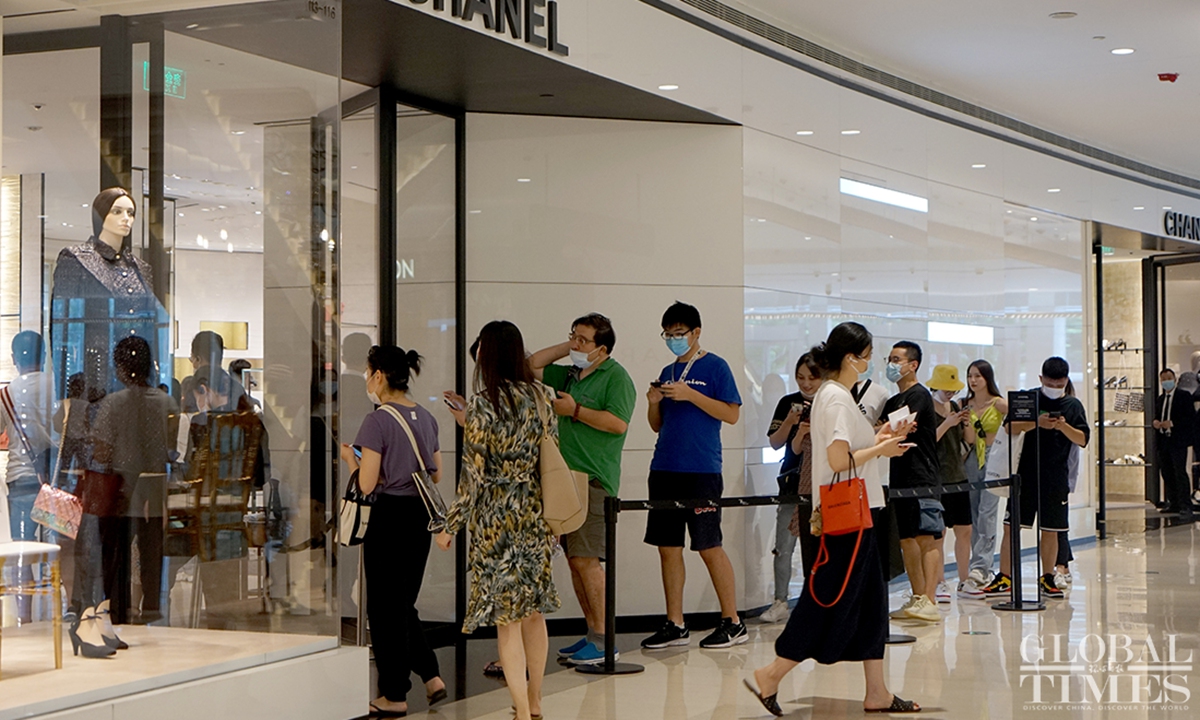
Photo: Li Hao/GT
China's economy growth slowed down in July, but a number of key economic indicators improved and maintained steady expansion, verifying the resilience of the world's second largest economy in face of challenges, ranging from the abrupt Delta variant outbreak, serious flooding in parts of the country, and a spike in bulk commodity prices.
Analysts predicted that the fallout of cluster coronavirus infections is likely to continue to weigh on the August economic performance, but that will not dent China's steady economic rebound prospect, as consumption is expected to regain steam after swift measures are taken to stifle the virus and as massive infrastructure investments roll-out across the country.
That would underpin the country to firmly stay on track to achieve its annual GDP goal of expanding at more than 8 percent.
Retail sales jumped 8.5 percent year-on-year in July, the National Bureau of Statistics (NBS) announced on Monday. That compared with 23 percent surge in the first half of 2021, due to a very low base last year.
Fixed-asset investment rose 10.3 percent year-on-year in the first seven months, slightly down from 12.6 percent recorded in the January-June period. Industrial output posed a 6.4-percent gain year-on-year in July, fading from a 15.9-percent rally over the first six months of 2021.
"There is an obvious moderation of growth in July due to the larger base last year and easing marginal effect of main economic drives," Hu Qimu, chief research fellow at the Sinosteel Economic Research Institute, told the Global Times on Monday.
Manufacturing activity weakened amid soaring bulk commodity prices and softening overseas demands, analyst said.
Tian Yun, former vice director of the Beijing Economic Operation Association, also noted that following the sudden Delta variant outbreak in mid-July, strict measures to control movement also hit China's consumption and domestic demand, inhibiting holiday travels, entertaining activities and other spending.
"We have expected an accelerated consumption peak in the second half, but the outbreak could delay its arrival, and that means the third-quarter growth will rely more on infrastructure, high-tech investment and manufacturing," Tian told the Global Times on Monday.
Analysts noted that the impact of the coronavirus and extreme weather conditions would be clearer in August. But they all stressed that such disruption due to anti-epidemic measures is short-term and "a necessary sacrifice" to consolidate China's hard-won economic achievements in the first half of the year, building on which China is able to continue picking up the recovering streak in the second half and leading the global growth.
In the first half of the year, China's GDP expanded at an impressive 12.7 percent, according to data released by the NBS.
Looking in the second half of the year, China will embark on a massive nationwide infrastructure building program, especially for projects under the country's 14th Five-year plan (2021-2025). Investment in high-tech industries will also be boosted, giving the economy a leg up, according to Tian.
And, Chinese consumers are expected to release their pent-up demand in the fourth quarter, as the clouds of coronavirus are swept away, analysts pointed out. They predicted that the whole-year GDP growth to hover at 8.3 to 8.4 percent, above the annual goal of 8 percent.
"We expect the monetary policy in the second half to tilt toward stabilizing growth and supporting small- and medium-sized enterprises," Hu said.

